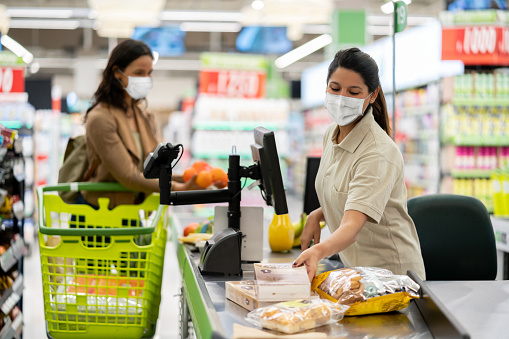A Supermarket Checker on Prices, Life and Whole Foods
One of the many jobs that I held before and during my college years in order to pay my college bills was a supermarket checker. Maybe that’s why I like to strike up a conversation with checkers to see how they’re feeling about their job and issues of the day.
A recent visit to a local Tucson supermarket was no exception. During checkout, I asked the forty-something checker if customers were complaining about rising prices for groceries.
“Oh, yeah,” she replied, “but I can’t blame them, as I have the same complaint. If prices get any higher, I finally might be able to stick to a diet and lose weight.”
She added, “Even worse, although I live in a tiny one-bedroom apartment in the ghetto, my rent was just increased from $830 to $1,150 per month. A Florida company owns the apartment complex and must think that it’s beachfront property.”
Continuing, she said, “I haven’t been able to afford to fix the air-conditioner in my car for two years, so when I get off work this afternoon, the car will be hot enough to cook a roast, if I could afford a roast.”
Listening to her woes, I felt fortunate that groceries aren’t a financial burden to my wife and me, although we’re retired and spend about $800 a month on them.
The conversation with the checker occurred on the day of our weekly shopping at Basha’s supermarket, a local chain with prices comparable to Safeway or Fry’s (Kroger). The bill was $116.67. Produce accounted for $69.21 of that amount, and bread, yogurt, cheese, lemonade, half-and-half, spices, and three pork steaks accounted for most of the remainder of $47.46. At $2.90 a pound, the steaks were a bargain.
Every three weeks we drive 20 minutes to a Walmart to stock up on canned goods, crackers, snacks, dairy products with a long shelf life, paper products, cleaning supplies, health and beauty products, and maybe a bottle or two of wine. Most of these items cost 30% to 50% less than their cost at Basha’s. Our total Walmart bill is typically about $250, or, on a weekly basis, about $84.00.
This means that we’re spending a little over $200 per week on groceries and associated items ($116 or so at Basha’s and $84 or so at Walmart). On a monthly basis, that comes to about $800, not counting a restaurant meal or two a week.
No doubt, grocery bills are considerably higher for people who buy a lot of prepared foods, snacks, designer water, soda, sports drinks, and liquor. Of course, the bills are even higher for those with kids at home.
Costs must be out of sight for those who buy groceries, snacks, and booze at convenience stores, which, amazingly, account for something like 30% of all grocery spending in the US. Many of the patrons are working-class guys, who, one would think, can least afford the high-mark-ups in convenience stores. Some of them pull up to the gas pumps at convenience stores in a humongous pickup truck and fill the tank with $100 or so of gas.
My 11-year-old RAV-4 looks like a 90-pound weakling next to the behemoths, and I probably look like a dork. Or maybe I look like a 90-pound weakling and my car looks like a dork.
The prices at Whole Foods are even higher than the prices at convenience stores and are way over my level of frugality, for quality that isn’t noticeably better than the quality at Basha’s, or, for that matter, at Walmart. For the few times that I’ve gone into a Whole Foods, I’ve gotten lightheaded from hyperventilating at the prices and pretentiousness. Not only that, but my RAV-4 develops an inferiority complex when I park next to a Tesla, Land Rover, BMW, Mercedes, or other luxury brands that dominate the parking lot.
Judging by bumper stickers, many patrons of Whole Foods are progressives, which means that they see themselves as caring about the poor, social justice, and climate change.
I wonder how checkers see them.



